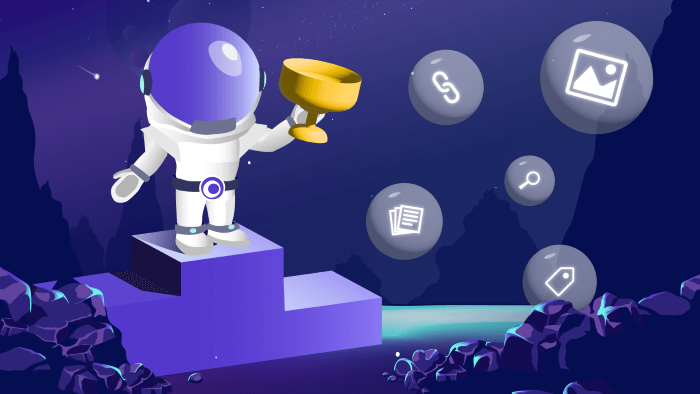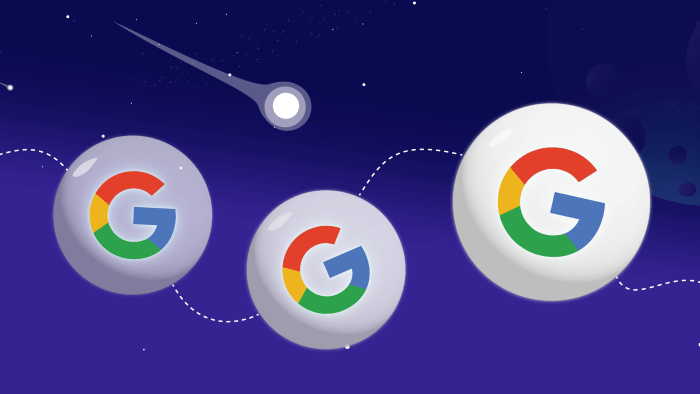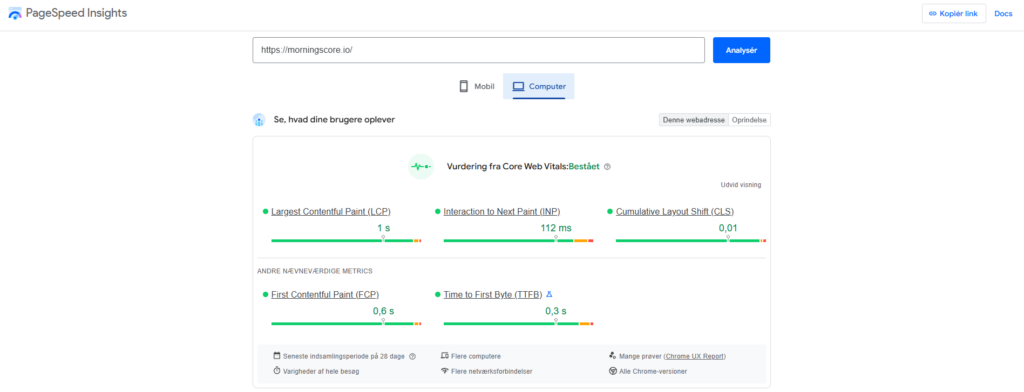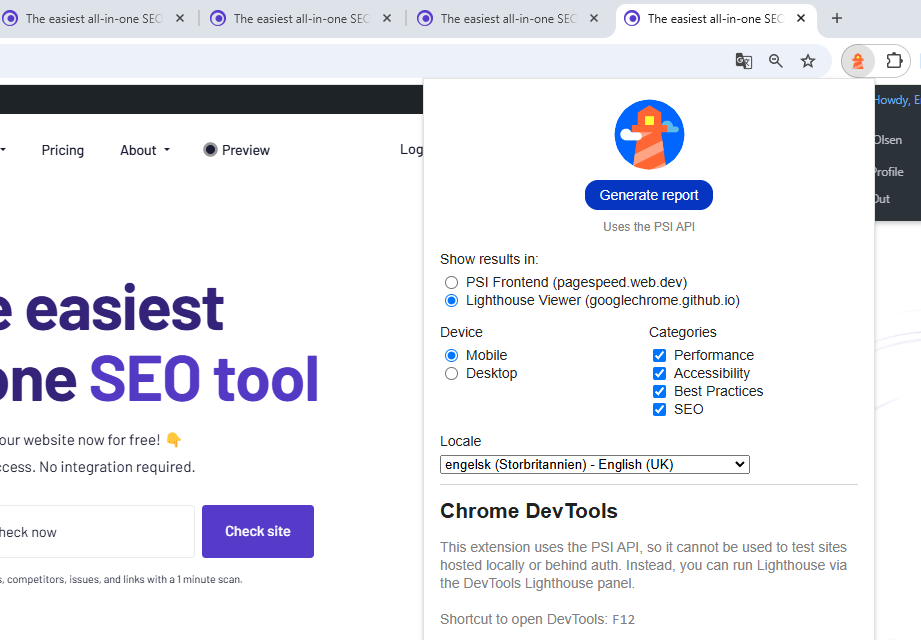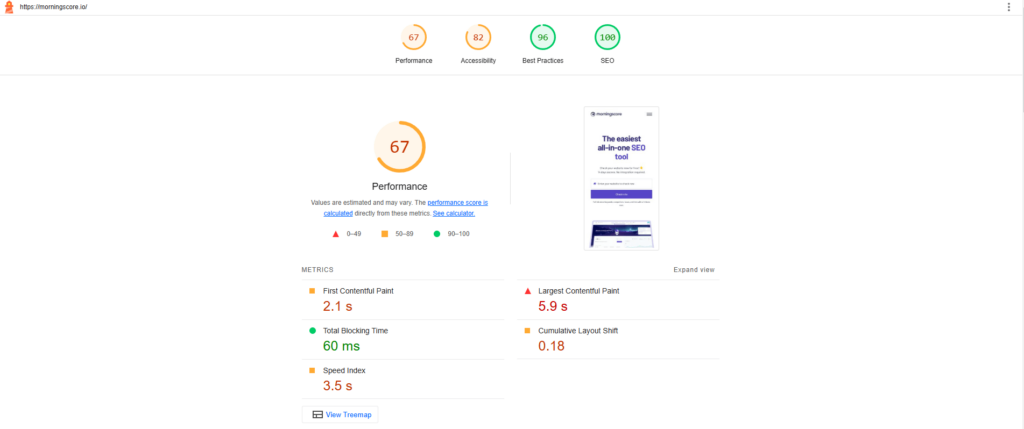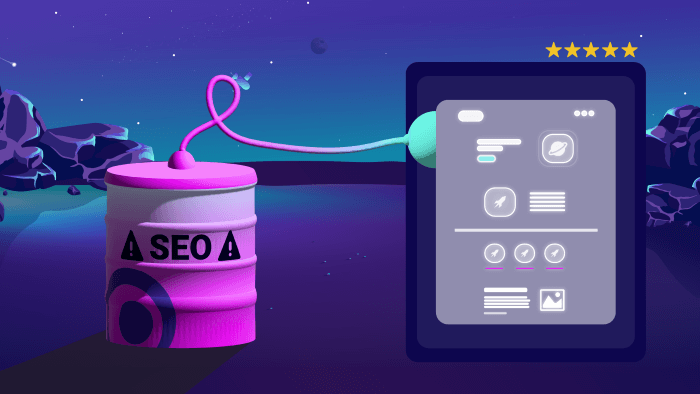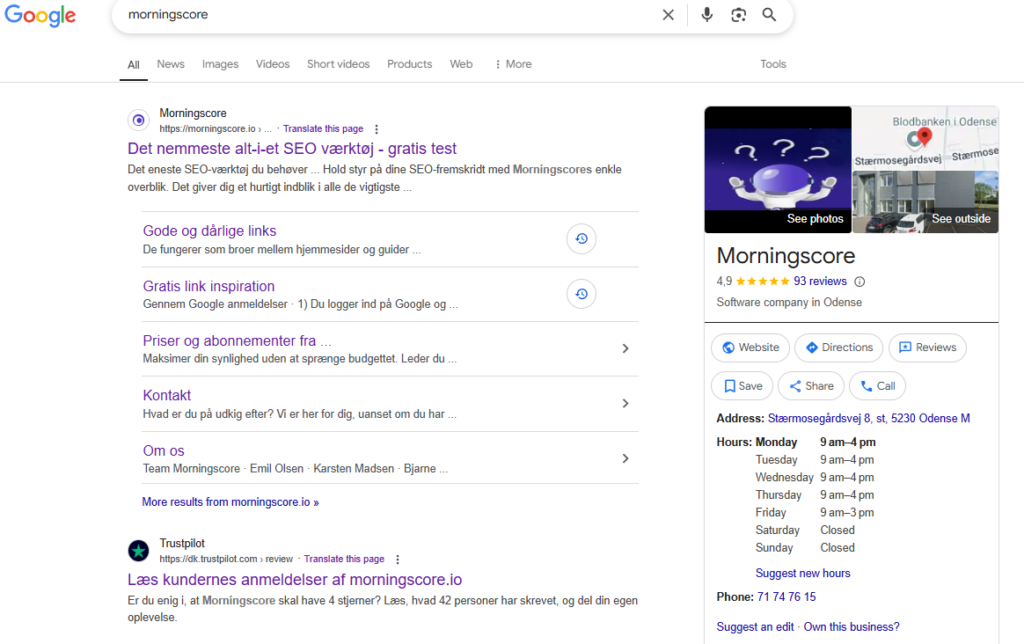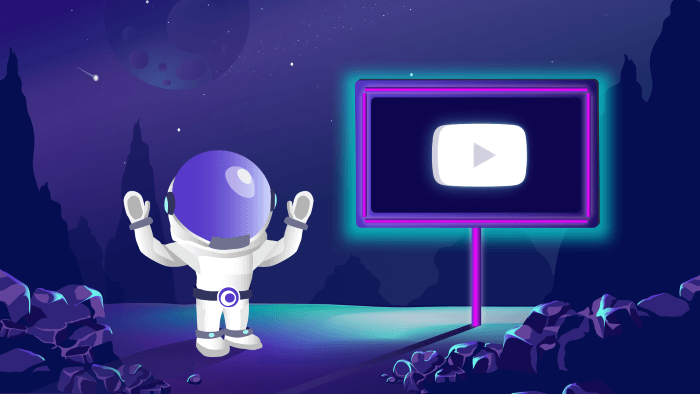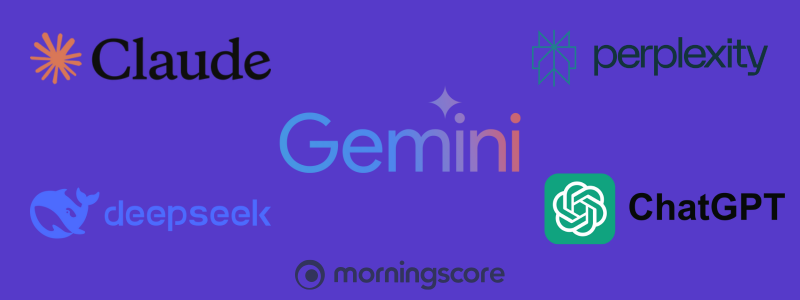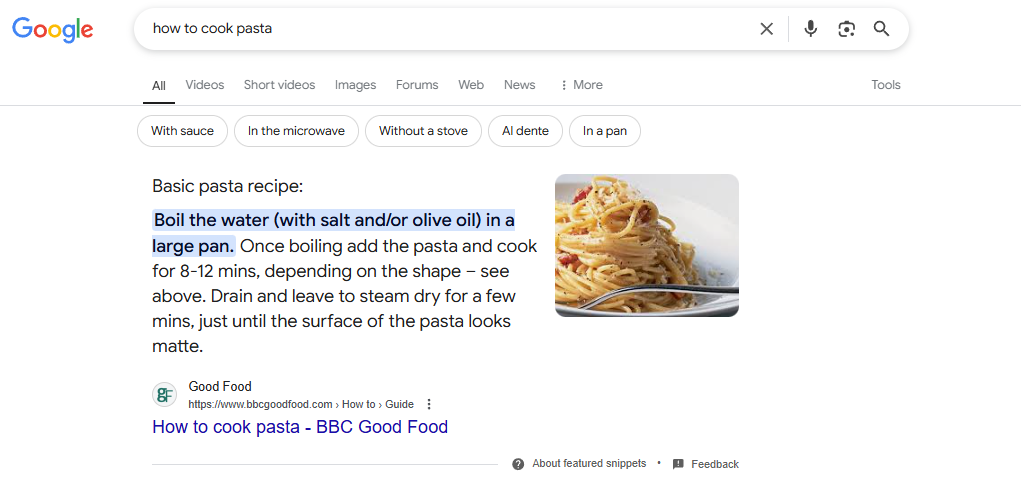The H1 tag is the main heading of the page and defines its primary topic. Use the H1 tag to mark the most important heading on the page and include your primary keyword. The H1 tag must clearly describe what the page is about and be relevant to the user’s search intent. Example: “SEO Optimization – A complete checklist.” There should only be one H1 tag on a page, as it helps structure the content for both search engines and users.
22. H2 – H6 Tags
H2 – H6 tags are subheadings, and 80% should include your keyword.
H2 – H6 tags divide the content into sections and help both search engines and users quickly find relevant information. Make sure to include relevant keywords in your H-tags naturally. Insert your keyword in about 80% of your H-tags. H-tags break the content into easy-to-read sections, improving the user experience. Examples: “ How to easily improve your SEO” and “Important SEO Factors.” Use H-tags to structure the content and make it easy to scan.
Check your H-tags with Morningscore’s H-tag checker.
23. Semantic keywords
Semantic keywords are words and phrases related to your primary keyword that help provide context to your content. Use synonyms and related keywords in your content to avoid excessive repetition of your primary keyword (keyword stuffing). This makes the content more natural and easier to understand. Example: Instead of using only “SEO,” include “search engine optimization” and “SEO strategy.” Semantic keywords target broader search queries and increase the chances of being found.
24.Internal links
Internal links are links between different pages on the same website.
Internal links connect pages on your website and create a structured layout. Link to other relevant pages on your site to improve navigation and help search engines index your pages. Example: Link from an article about “SEO Tips” to “SEO Courses” on your website. This improves both SEO and user experience by making it easier for visitors to find related content
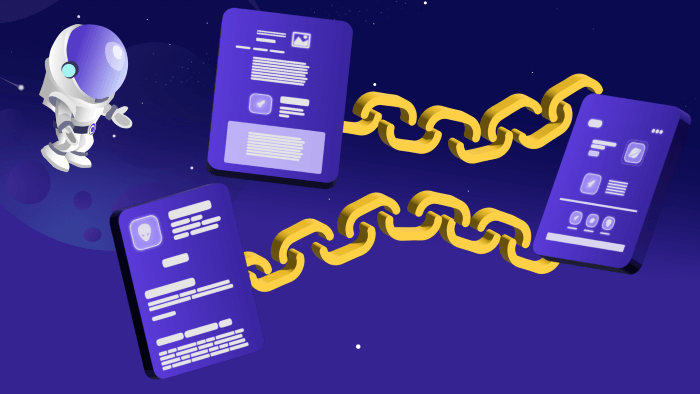
25. Find broken links
Broken links lead to pages that no longer exist.
Broken links create a poor user experience and weaken SEO by misleading users and Google.
Identify and fix broken links on your website by updating them or setting up 301 redirects to active pages. This preserves link value and makes sure users and search engines do not encounter errors.
Use Morningscore’s broken link checker to find and fix broken links.
26. First 100 words
The first 100 words on a page are crucial for SEO, as they provide a clear idea of the page’s topic. Include your primary keyword early in the text, preferably within the first 100 words. This helps search engines quickly understand the content. Introduce the topic clearly and concisely to keep users engaged. Avoid unnecessary filler words in the opening sentences.
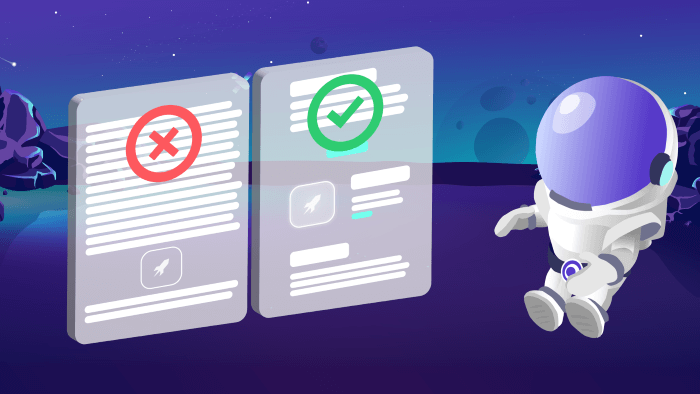
27. Content length
Content should ideally be over 1,000 words, but quality, depth, and search intent matter more.
Content length affects your page’s SEO performance. Longer content often ranks higher in search results. Aim for at least 1,000 words to cover the topic thoroughly, include more keywords, and provide value to users.
Focus on content quality. Your text must match search intent and be relevant. Check Google and compare with top-ranking posts for your keyword. Quality is more important than quantity, and valuable content that aligns with search intent is prioritized.
28. Grammar
Grammatically correct content is essential for both user experience and SEO. Poor grammar harms your site’s credibility and ranking. Make sure your text is grammatically correct and easy to read. Use tools like Grammarly or AI-based tools to fix errors and review your text to maintain natural flow. Proper grammar improves user experience and helps maintain strong SEO performance.
29. Images and alt tags
Alt tags are short text descriptions of the image content.
Images on your website should be optimized for both visual quality and SEO. Alt tags help search engines understand image content. Alt tags are short descriptions added to HTML code.
Describe images with relevant alt tags that include keywords or accurately define the image. Example: “SEO checklist that helps improve SEO.” Alt tags are important for SEO and make your site more accessible to visually impaired users. Make sure alt tags are descriptive and relevant to page content.
Check if your images have alt tags using Morningscore’s alt tag checker.

30. Image compression
Images should be under 100 KB, but quality is most important.
Images should ideally be under 100 KB, but quality and resolution matter most. Image size affects your website’s load time. Large images slow down your site and negatively impact user experience. Use tools like TinyPNG to compress images, reducing file size without losing quality. This improves load speed, which is crucial for both SEO and user experience.
ℹ️Optimized images help your website load faster and improves search rankings.
31. Engaging content
Engaging content keeps users’ attention and increases time spent on your site, improving SEO. Create content that is valuable, interesting, and relevant to users. Use a mix of text, images, videos, and interactive elements to maintain engagement. Content that provides value and encourages interaction increases the chances of users returning and sharing your website.
32. External links
External links connect your website to external sites.
External links (outbound links) point to relevant and authoritative sources outside your website. Link to reliable sources to increase credibility and help search engines understand your content. Outbound links boost site authority by showing that your content is backed by trustworthy sources. Make sure links are relevant and lead to websites with authority.
33. CTA (Call-to-Action)
A CTA is a prompt for users to take action.
A Call-to-Action (CTA) encourages users to take specific actions, such as signing up for a newsletter or purchasing a product. Make sure your CTA is clear and visible. Use action-oriented language like “Sign up now” or “Buy today.”
A well-placed CTA helps convert visitors into customers and plays a key role in improving website effectiveness. Make sure your CTA is relevant to the content and strategically positioned on the page.
34. Cache service
A caching solution improves your website’s load time by storing static versions of your pages, allowing users to access content faster. Implement a caching solution like WP Rocket or W3 Total Cache to reduce server load and speed up loading times. A faster website improves user experience and boosts SEO rankings. Choose a solution compatible with your site to optimize performance.
Link building
35. Quality backlinks
Backlinks are links from other websites pointing to yours. Getting links from relevant, authoritative sites increases your website’s authority and visibility. The more high-quality backlinks you have, the better it is for your rankings. Low-quality backlinks, however, can harm your rankings. Build relationships with websites in your niche to gain natural, relevant links. Read more about good and bad links here.
36. Steal competitors’ backlinks
Backlinks from authoritative sites improve visibility and credibility. By analyzing competitors’ backlinks, you can find new link opportunities. Use tools like Morningscore’s competitor tool to identify their backlinks and acquire similar ones. Focus on relevant, high-quality links to strengthen your domain authority.
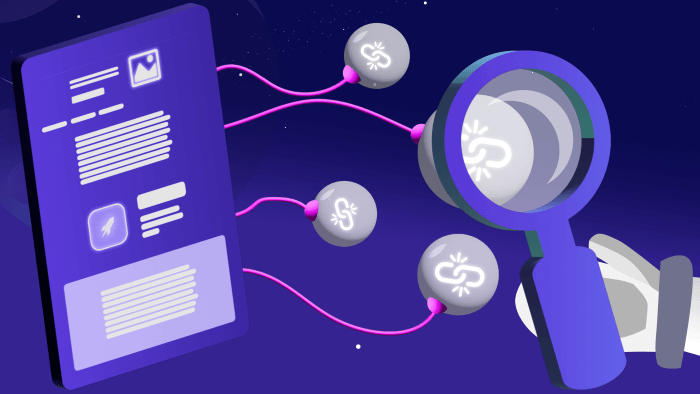
37. Brand mentions
Brand mentions are references to your brand without a link. Google considers them a ranking factor. They have gained more value because they align with user search intent. Contact sites that mention your brand without a link and ask them to add one. Optimize your PR efforts to gain more positive mentions and links that boost your visibility. Read about unlinked brand mentions here.
38. Broken link building
Broken link building involves finding dead links on other websites and offering your content as a replacement. Identify broken links on relevant sites and contact the owner to suggest your content as an alternative. This strategy benefits both parties by fixing broken links and earning a high-quality backlink for your website.
Local SEO checklist
39. Google business profile
Google Business Profile is a free platform that helps businesses appear in local search results. Create and optimize your profile with correct information, including name, address, phone number, and images.
A complete and up-to-date profile boosts visibility in local searches (local SEO)and makes it easier for potential customers to find you. Keep your profile updated and engage with customer reviews.
How to Create a Google Business Profile:
-
Go to Google Business Profile and click “Start Now.”
-
Sign in with your Google account.
-
Enter your business name and address.
-
Choose a category and add contact details.
-
Verify your business by entering the verification code sent to your address.
-
Complete your profile by adding business hours, images, and additional details.
40. NAP consistency
NAP stands for Name, Address, and Phone Number, and it is essential for local SEO. Make sure your NAP is the same across all platforms, including your website and online directories. Consistent NAP information helps search engines confirm your business’s legitimacy and relevance for local searches. Inconsistent details can confuse both search engines and users.

41. Local reviews
Local reviews are a crucial factor for local SEO and help build credibility. Motivate customers to leave reviews on Google and other review platforms. Positive reviews improve your business’s visibility in local search results and attract more customers. Actively engage with customers by responding to their reviews to build a strong reputation.
Additional SEO Points
42. SEO audit
An SEO audit is a comprehensive analysis of your website’s SEO performance. Conduct regular SEO audits to identify and fix issues on your website. Audits highlight technical problems, content optimization, broken links, and missing backlinks. This provides a clear overview of what needs improvement to optimize your website.
43. SEO for videos
Video content is becoming increasingly important for SEO as it attracts users and boosts engagement. Optimize video content with relevant titles, descriptions, and tags to help search engines find and index it. Use platforms like YouTube and Vimeo, and make sure keywords are included in titles and descriptions. Well-optimized videos improve your visibility and engagement.
44. SEO for voice search
Voice search is when users search by speaking to a search engine, and it is becoming more popular. Optimizing for voice search requires a different approach to keyword optimization. Use natural, conversational keywords and focus on long-tail phrases and questions that people would ask in a conversation. Make sure your content provides direct answers, as voice searches often seek quick and precise responses.
45. SEO and user experience (UX)
User experience (UX) plays a significant role in SEO, as Google prioritizes websites that offer a great experience. Focus on fast loading speed, easy navigation, and mobile-friendliness. A website that is easy to navigate and loads quickly increases user engagement and reduces bounce rates. Google considers UX a key ranking factor, so optimizing UX improves your SEO.
LLM Optimization
LLMO is the optimization of content for LLMs (a type of AI specifically designed to understand and generate text).
LLMO (Large Language Model Optimization) is making content easily understandable for AI-based search engines, making sure that they prioritize your content in search results. Read more about LLMO here.
46. Digital PR
Digital PR involves building an online reputation through media and coverage. Gaining exposure on authoritative media platforms increases your visibility and credibility. PR efforts help generate backlinks, improve brand awareness, and enhance online authority. Focus on getting your business mentioned on relevant blogs, news websites, and influencer accounts to expand your reach.
47. Strong backlink profile
Backlinks are essential for building authority and improving SEO and LLMO. Work on acquiring links from reputable sources to strengthen your visibility in AI-driven search results. Backlinks from relevant and authoritative websites signal to Google that your content is valuable and trustworthy. The more high-quality links you have, the better your website ranks in search results.
48. Entity research
Entity research focuses on optimizing content with entities recognized by search engines and LLMs (Large Language Models).
Entities are specific, recognizable elements such as brands, people, locations, events, products, or concepts with a clear meaning. Search engines and LLMs use entities to understand connections and relationships between topics in search results.
ℹ️ Including entities improves visibility in AI-driven search results and makes sure your content is recognized as relevant and trustworthy.
49. Wikipedia pages
A Wikipedia page improves your visibility and credibility. Creating a Wikipedia page for your business increases brand authority and online reputation. Wikipedia is one of the most authoritative sources on the internet, and having a page builds strong visibility in search engines and LLMs.
50. Using Reddit and UGC
Reddit and UGC (User-Generated Content) are highly valued by search engines and LLMs because they are considered “helpful content.” Utilizing social platforms like Reddit increases visibility and strengthens SEO. Actively participate in Reddit and other UGC platforms to gain AI recognition. When users engage with your content on these platforms, it boosts your visibility, generating backlinks and brand mentions that improve your SEO.
Read more about, how you get backlinks from Reddit here.
Additional Optimization
51. Core web vitals
Core Web Vitals are a set of performance metrics Google uses to evaluate user experience on a website. They focus on speed, interactivity, and visual stability, which directly impact SEO rankings.
The Three Key Metrics:
-
Largest Contentful Paint (LCP): Measures how long it takes for the largest visible element on the page to load. A good LCP score is under 2.5 seconds.
-
First Input Delay (FID): Measures the time from when a
-
user interacts with the page (e.g., clicking a button) to when the browser responds. A good FID score is under 100 milliseconds.
-
Cumulative Layout Shift (CLS): Measures how much the layout shifts during loading, affecting user experience. A good CLS score is below 0.1.
Google Tools for Optimization:
-
Google PageSpeed Insights: Analyzes Core Web Vitals and other speed-related metrics for your site.
-
Google Search Console: Provides insights into your site’s Core Web Vitals under the “Core Web Vitals” section.
-
Lighthouse: Offers detailed data on LCP, FID, and CLS.
ℹ️ Improving Core Web Vitals results in a faster, more responsive, and stable website, improves both user experience and search rankings.
52. Internal search optimization
Internal search optimization focuses on improving the functionality of your website’s search feature. Optimize your website’s internal search function so users can easily find relevant content. A well-optimized search feature improves user experience and reduces bounce rates, positively impacting SEO.
53. Featured snippets
Featured snippets are highlighted answers that appear at the top of Google search results, providing users with direct information. Use FAQPage and HowTo schema to improve your chances of appearing in featured snippets. Structuring content with these schemas increases the likelihood of your content being selected as a featured snippet, boosting visibility.
54. Social signals
Social signals refer to how your content is shared and interacted with on social media. Share your content on social media platforms to increase visibility and potentially generate backlinks. Social signals drive traffic to your website and indirectly improve SEO by increasing online authority and recognition.
Read more about backlinks, brand mentions, and social media usage here.
FAQ
What is SEO, and why is it important for my website?
SEO (Search Engine Optimization) is optimizing your website to rank higher on search engines like Google. It is important because higher rankings lead to more traffic, visibility, and the potential to attract more customers.
How can I quickly improve my website’s SEO?
Start by optimizing basic elements like meta-tags, images, and internal linking. Make sure your website loads fast, is mobile-friendly, and conduct keyword research to target the right traffic.
What is the difference between on-page and off-page SEO?
On-page SEO refers to optimizing elements on your own website (e.g., content, tags, internal links). Off-page SEO involves factors outside your website, such as backlinks and social media mentions, which affect your website’s authority and ranking.
What is an SEO checklist, and why is it important?
An SEO checklist is a systematic list of optimization steps to make sure better visibility on search engines. It’s important because it helps track all aspects of SEO so nothing is overlooked, leading to better rankings.
How do you create an SEO strategy?
Start by defining clear goals, conduct keyword research to identify relevant keywords, and then focus on both technical, on-page, and off-page SEO to achieve higher rankings and traffic.
How do you conduct keyword research effectively?
Use tools like Morningscore.io to identify relevant keywords, assess search volume and competition, and select keywords that match your audience and goals. Focus on both short and long-tail keywords.
What should be done to optimize technical SEO?
Make sure your website is mobile-friendly, loads quickly, has a good URL structure, correct internal linking, and optimized images. Implement a sitemap for better indexing.
How do you optimize on-page SEO?
Optimize titles, meta descriptions, headers, and images. Use relevant keywords naturally in your content and make sure your site is easy to navigate for both users and search engines.
How do you build links and manage off-page SEO?
Build backlinks from relevant and authoritative websites, use guest blogging, partnerships, and engage in relevant forums. Off-page SEO is about increasing your website’s credibility and authority.
How do you monitor and measure SEO performance?
Use tools like Morningscore.io, Google Analytics, and Search Console to track rankings, traffic, and click-through rates. Measure how your keywords perform and adjust your strategy based on the results.
How do you keep your SEO strategy updated and relevant?
SEO strategies should be adjusted regularly to reflect changes in algorithms, trends, and user behavior. Stay updated with SEO news and revise your strategy every 3-6 months to remain competitive.

